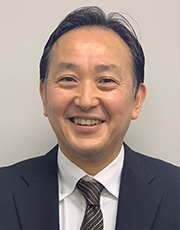Special Lecture (V)
Update surgical strategy toward pancreatic cancer in Japan

Pancreatic ductal adenocarcinoma (PDAC) is still one of the most devastating disease, with a 5-year survival rate of less than 10%. Surgical resection is the only treatment for potential cure, however, more than 80% of patients with PDAC are deemed unresectable at the time of diagnosis. PDAC starts to metastasize systemically from an early stage, and can be assumed to be a systemic disease. For patients with resectable PDAC, a strategy of upfront surgery and adjuvant chemotherapy is the standard approach, with a 5-year survival rate after resection of 10-20%. Neoadjuvant therapy (NAT) including neoadjuvant chemotherapy (NAC) or neoadjuvant chemo-radiotherapy (NAC-RT) is widely used for resectable (R-PDAC) and borderline resectable PDAC (BR-PDAC). For unresectable PDAC (UR-PDAC), improvement of prognosis was reported with the advent of gemcitabine (GEM), and a higher response rate and improvement of overall survival were shown by administration of strong anticancer agents, such as gemcitabine plus nab-paclitaxel (GnP) and FOLFIRINOX. In the last decade, downstaging surgery or conversion surgery (CS) in patients with initially UR-PDAC who responded to systemic chemotherapy is increasingly reported. To date, there are no robust data which indicate the clear benefit of CS and no consensus of the indication and optimal timing of CS for UR-PDAC. Due to the development of systemic chemotherapy, systemic chemotherapy is given to patients who cannot be resected or are difficult to resect, and resection is performed after obtaining a certain response. Conversion surgery for UR-PDAC is being increasingly reported after the introduction of more effective systemic chemotherapy regimens.